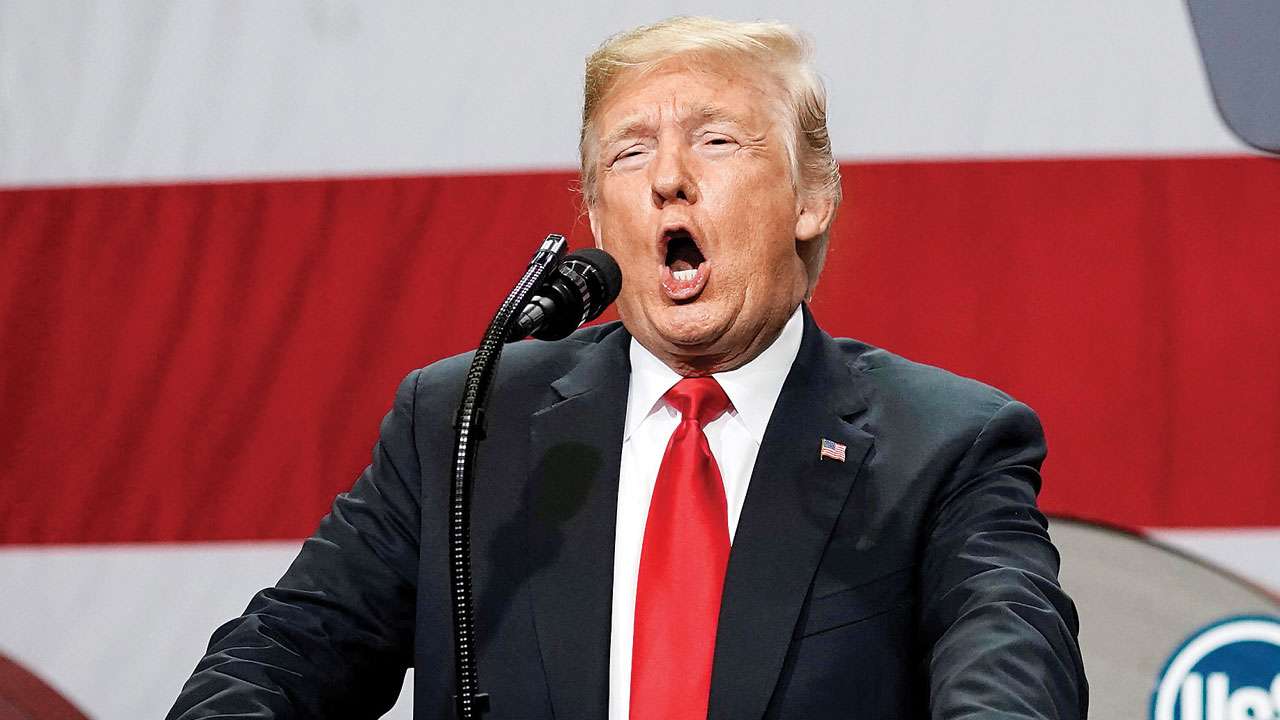
The New York Times (NYT) is rabidly anti-Trump, as are most other newspapers in the world. So recently (June 1, 2018) when the NYT carried an article claiming that ‘we ran out of words to describe how good the job numbers are’, it was the strongest endorsement of President Trump’s economic policy that has created remarkable economic growth and employment in the US.
Here are some astounding numbers for the US economy. Second quarter GDP jumped to 4.1 per cent, the highest in four years. The economy is adding, on an average, about 2,25,000 jobs per month. The unemployment rate has dropped to 3.8 per cent, the lowest level in 18 years, and unemployment among black Americans is at 5.7 per cent, which is the lowest ever in recorded history. Combine this with the fact that average hourly earnings have risen by almost 3 per cent over the last year, and you have even the NYT gushing and using words like ‘salubrious’, ‘salutary’ and ‘healthy’ for the US economy. These are numbers not seen since Ronald Reagan was the president in the 1980s.
There are lessons here for Indian policymakers. India’s employment growth is tepid. Lack of good data and a large informal sector, which remains mostly unmeasured prevents an accurate assessment of job creation in India. An economy growing in the 6 per cent to 7 per cent range must be creating new jobs, but the number of jobs is nowhere large enough to meet the demand for employment.
Here is a critical aspect of US job creation — the jobs are being created by businesses and not the government. The Trump administration has introduced favourable and supporting policies that allow businesses to deploy capital, expand production and hire people. And that’s the first lesson India can learn from the US economic miracle: jobs are created in the private sector and not the government. Since taxes need to be collected from the private sector to pay for government jobs, for every one job created in the government sector, three are lost in the private sector. The government’s primary role is to create an environment that allows the private sector to take risks, expand production and hire more people.
The second lesson is that taxes matter and lowering taxes is the fastest and most effective way to promote economic growth and create jobs. Trump’s first significant legislative act was to reduce the corporate tax rate from 35 per cent to 21 per cent, and, importantly, the cuts were made permanent. For years, the 35 per cent tax rate was preventing US companies from investing domestically and forcing them to move their production overseas. As a result of tax rates being dropped to 21 per cent, many companies decided to shift production to the US. Taxes are critical to economic growth — the lower they are, the faster the economy grows, and greater the number of jobs created in the process. It is crucial, therefore, to keep the tax rate as low as possible to incentivise companies to invest in new plants and create employment.
Indian policymakers have always confused tax rates with tax revenue. Their belief that higher tax rates will lead to higher tax revenues is based on the idea of getting a larger share of a fixed pie. In reality, the opposite is true: lower tax rates incentivise businesses to add capacity, which in turn increases taxable earnings and the size of the pie. In the US, tax revenues increased 5.2 per cent after the tax cuts and total taxable income increased by 13 per cent. With GDP growth now projected to increase to around 4.1 per cent from the earlier projection of 2.7 per cent, tax revenues to the public exchequer are expected to increase by about 10 per cent.
India’s Finance Minister mentioned reducing corporate tax rates in his Budget speech, but indicated that the reduction in corporate tax rates would be made gradually over the years. But some corporates feel that India should follow what the Trump administration did and make a substantial and permanent tax cut in one fell swoop.
The third lesson and probably the most important one in the Indian context, is the importance of reducing the regulatory burden on businesses. Being a businessman, Trump understands, better than anyone, that regulations and red tape are business killers and thus destroy the job creation process. He has launched an aggressive assault on regulations. Immediately upon taking office, he signed an executive order that required the elimination of two existing regulations for every new regulation created, and the additional requirement that the cost of any new regulation be offset by eliminating regulations with the same costs to businesses. He also created a separate department, assigned with the specific responsibility of identifying and cutting redundant and useless regulations.
Indian businesses are choked by regulations — not only in sheer numbers, but also their complexity, redundancy, and lack of consistency. Prime Minister Narendra Modi can pass an executive order similar to the one passed by Trump, which would require the elimination of five old regulations for every new one created. A separate office to identify and destroy useless, redundant and conflicting regulations can be established to assure the private sector that the government is serious about creating an environment conducive to new business development.
The economy is a complex ecosystem with millions of stakeholders. Its functioning is best left to free market forces. The most effective thing any government can do to affect the economy and create jobs is to create an environment that reassures businesses that their capital investments will not be subject to arbitrary and capricious government regulations and that their profits will not be taken away by unreasonable and excessive taxation.
The author is a Financial Economist and Founder of contractwithindia.com. Views are personal.